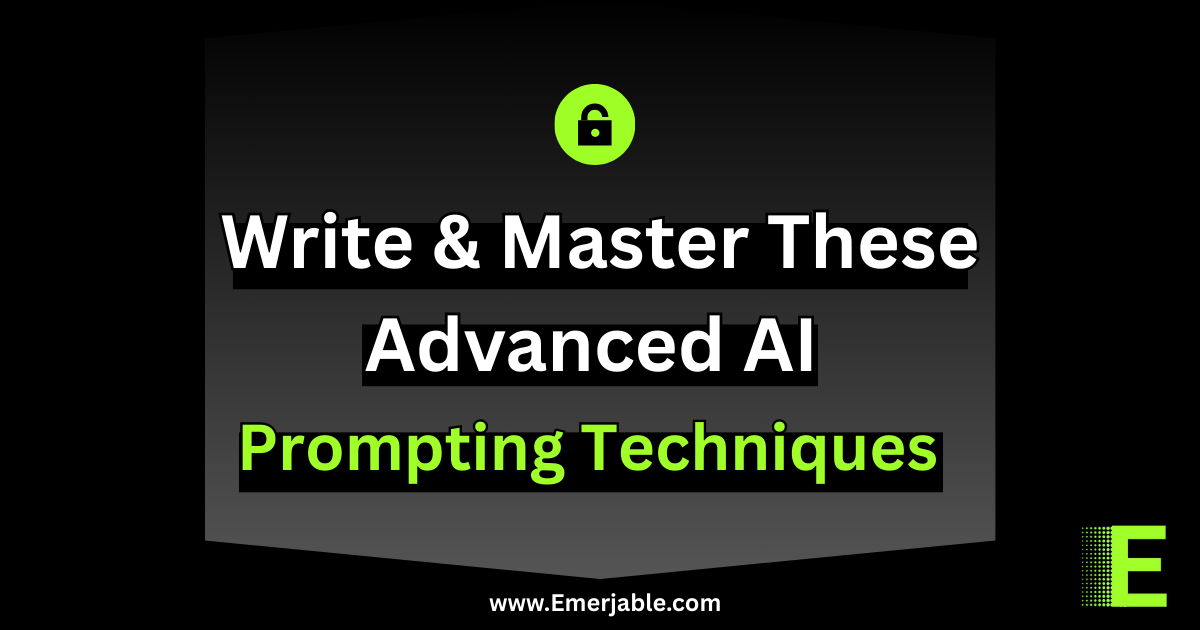🚀 Why LLM Prompt Engineering Is the Real Power Move
While most users are still treating AI like a simple question-answer machine, the real potential of Large Language Models (LLMs) lies in prompt engineering—the art and science of designing instructions that produce optimized, high-impact results.
If you’re ready to move beyond “just asking questions” and toward mastering the craft of advanced AI interactions, this article will equip you with the techniques, strategies, and mental models to generate next-level AI text.
🎯 What Is Advanced Prompt Engineering?
At its core, advanced prompt engineering involves:
- Iterative Prompting: Refining outputs through step-by-step feedback
- Context Stacking: Supplying layered background for richer results
- Role Conditioning: Framing the AI’s persona to shape tone and depth
- Chain-of-Thought Reasoning: Guiding the model through logical steps
- Few-Shot Learning: Providing in-prompt examples to improve accuracy
These methods take your outputs from generic to targeted, persuasive, and intelligently nuanced.
🧠 1. Iterative Prompting: Better with Every Round
Instead of expecting perfection on the first try, treat prompting like a conversation loop.
🔁 Technique:
Prompt > Review > Refine > Re-prompt
💡 Example:
Initial prompt:
“Write a product description for a smart desk.”
Refined prompt (after review):
“Write a persuasive, 3-paragraph product description for a smart desk. Focus on productivity, ergonomic features, and smart integrations. Use a confident, tech-savvy tone.”
Why it works: You’re guiding the AI progressively, narrowing ambiguity, and introducing tone/style alignment.
The Ultimate Guide to Mastering Effective LLM Prompts for AI Text Generation
🧱 2. Contextual Layering: Stack the Right Information
LLMs thrive on context. Without it, responses are vague or off-target.
🔍 Technique:
Feed the model with structured background before the instruction.
📌 Format:
yamlCopyEditContext:
- Audience: Remote workers
- Product: Adjustable smart desk
- Key features: Ergonomic height control, wireless charging, app integration
Instruction:
Write a product description that highlights these features in a friendly tone.
Why it works: You’re shaping the “mental model” the AI uses to generate its output.
🧑💼 3. Role Prompting: Tell the AI Who It Is
LLMs adopt roles extremely well. Giving it a defined identity leads to stronger, more targeted responses.
🧾 Prompt Template:
“You are a [role] with [background/experience]. Your task is to [goal]. Use a tone that’s [style/tone].”
🧠 Example:
“You are a senior UX copywriter at a leading SaaS startup. Write compelling onboarding messages that guide users through their first login experience. Keep the tone crisp, friendly, and helpful.”
Why it works: This primes the model to adopt expert-level tone and domain understanding.
🧩 4. Chain-of-Thought Prompting: Step-by-Step Reasoning
Complex tasks like decision-making, analysis, or problem-solving benefit from guided reasoning.
🧠 Prompt Style:
“Let’s think through this step by step.”
💡 Example:
“You are a content strategist analyzing why a blog post underperformed. Break down the possible issues step by step and suggest improvements.”
Why it works: LLMs perform significantly better when encouraged to reason instead of jumping straight to conclusions.
🧪 5. Few-Shot Prompting: Teach by Example
Instead of telling the model what to do, show it.
🎓 Technique:
Provide 1–3 high-quality examples of the desired output before your new request.
🔍 Example:
vbnetCopyEditExample 1:
Q: Summarize this article in 3 bullet points.
A: - Describes how AI is transforming retail
- Highlights use cases like inventory automation
- Concludes with market growth stats
[Insert new article]
Q: Summarize this article in 3 bullet points.
Why it works: LLMs generalize from patterns. The more accurate your examples, the more precise the output.
🛠️ Bonus Techniques: Power Tips for Prompt Optimization
✨ Use Output Constraints
“Limit response to 100 words.”
“Only output bullet points.”
“Avoid technical jargon.”
✨ Ask for Multiple Options
“Give me three variations with different tones: formal, conversational, and humorous.”
✨ Combine Prompt Techniques
Layer multiple techniques together for maximal control:
Role prompting + context stacking + output constraints = premium-quality text.
📈 Use Cases Across Industries
| Industry | Use Case | Advanced Prompt Approach |
|---|---|---|
| Marketing | Ad copy variations | Few-shot + Role prompting |
| Education | Curriculum summaries | Chain-of-thought + Context stacking |
| Legal | Contract simplifications | Role prompting + Output constraints |
| Finance | Report generation | Context layering + Iterative refinement |
| Product Teams | Feature spec drafting | Role prompt + Few-shot + Structured outputs |
🧭 Final Thoughts: From Prompting to Precision
The future of working with AI is not about asking the right question once. It’s about learning how to:
- Scaffold tasks
- Layer context
- Think step-by-step
- Iterate with intention
- Communicate like a human, not a coder
Mastering these advanced LLM prompt engineering techniques unlocks the true creative and analytical power of generative AI—allowing you to create faster, smarter, and with more impact than ever before.
Want to Go Deeper?
Explore more on:
- The Ultimate Guide to LLM Prompting
- What Exactly Are AI Prompts? A Simple Explanation for Everyone
- Understanding the Basic Structure of Effective LLM Prompts
- LLM Prompts for Beginners: Your First Steps to AI Text Generation
- The Secret to Writing Effective LLM Prompts for Engaging Blog Posts
- Boost Your Social Media: Proven LLM Prompts for High-Impact Content
- Crafting Compelling Emails with AI: Effective LLM Prompt Strategies
- Unleash Your Creativity: Mastering LLM Prompts for Story Writing
- Generate High-Converting Product Descriptions with These LLM Prompts
- LLM Prompts That Actually Work for Summarizing Long Documents

